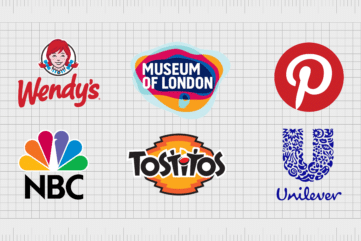Are you switched-on to the power of digital design?

Do you have a ‘thing’? You know, some aspect of work or life that gets you super motivated so you can’t wait to start the day? I do. In fact I have two ‘things’… Digital strategy and digital design.
Digital strategy and digital design really light my fire. I get excited by the impact digital design agencies are able to make on society through innovative ideas and the experiences they create. When that thinking is applied to businesses, organisations and education providers it really hits my sweet spot.
I passionately believe that we must invest everything we have in digital design. It’s the primary medium to communicate the agenda, as we try to meet the challenge of our current unsustainable social, environmental and economic choices. But I remain optimistic. That same capacity for innovation that is present in digital design agencies, is also present in the business community, across many corporates, and the education sector. I believe that through digital design, we will find solutions to some of our biggest issues.
As we’ve established, I am switched-on to the power of digital design. But how about you? Does your website meet the needs of your existing and potential audiences? Is your website design attention grabbing and engaging? Is your digital marketing strategy aligned to your other communication activities? Or, are you failing to realise the full potential of digital design?
What would you say if someone told you that there was a way to attract new clients and staff, and help them feel involved, informed and engaged with your company, and that many of your competitors hadn’t fully tapped into its true potential yet?
Well that’s the potential of digital design and the technology behind it. Potential that, by and large, isn’t being mined to its full extent by the UK’s business community. This is despite their core audience often being young people – the most avid and demanding digital consumers of all.
Some sectors are awash with companies that are harnessing the power of digital design, mobile and social channels. Online supermarket shopping is well established, making life easier for shoppers and giving supermarket owners a myriad of marketing opportunities.
Holiday brochures are dead, replaced by online videos, reviews, comparison sites and booking systems, all connected to CRM systems that make sure we continue to get relevant, timely, holiday suggestions. Publishing, financial services, the car industry – even some government departments – are all using the power of digital design to help customers make informed decisions and find a sense of belonging, and to help themselves reach new markets, build better relationships and grow communities. But still, the benefit of having a truly joined-up digital strategy is not being reaped by all.
Digital barriers
Some organisations are making great progress with their digital marketing strategies, which demonstrates just what can be achieved with the right approach and resources. But many are still lagging behind. So what’s holding these organisations back? It’s not that the power of digital design is being ignored altogether – it continues to be a top that generates column inches. Rather, it’s that well-intentioned projects don’t get off the ground or, if they do, the finished reality fails to meet the initial vision. This is where digital strategy plays a crucial role. If the digital strategy isn’t robust, that planned digital marketing campaign is less likely to go into development. And if it does, the numbers might not be to the liking of your finance director.
So, is the problem partly down to who gets to run digital design projects within an organisation? Because digital design is technical, IT teams tend to be given the responsibility for at least partly delivering them. And they’re bound to approach projects from a technical, rather than a marketing, perspective. Their primary focus is often the content management system, and other technology considerations. They choose vendors based on their technical experience with a particular CMS platform and not on their understanding of what needs to be achieved and how multiple digital marketing channels can work together to create something that will really involve the user over the course of their relationship with an organisation.
Another barrier is planning, which often happens in silos, rather than at a strategic level. Projects happen in isolation, without much thought for how they might blend with other projects or platforms. Access to a strategically-focused digital design agency can really pay dividends here. It can take input from an external partner to realise the power of digital design.
I’ve seen organisations that have put a lot of time and effort into a really nice external website design. But internally, they just go with an out-of-the-box implementation. Job done. Box ticked. It’s functional, but it’s never going to win hearts and minds.
And thinking can centre too much on what the project leaders want – or are familiar with – and not enough on what their audiences need and how they behave. For instance, desktop website design sometimes get priority over mobile web design, because marketing teams feel more comfortable with this technology, and still haven’t made the transition to mobile first. But most potential users rely on a mobile phone as their main way of interacting with the digital world.
Content can also be a stumbling block. Instead of creating something specifically to play to the strengths of digital channels, you get insipid marketing content that’s been regurgitated from printed materials. It’s prone to being flat, boring and uninspiring. Everything that digital design isn’t.
Team thinking
So how can an organisation with big digital ambitions turn this around and come up with exciting, multi-channel programmes that will get current and prospective audiences really engaged? The answer lies in putting together a multi-disciplinary team, tasked with creating integrated digital design services. You need to get people from all your stakeholder groups together – internal and external, staff, stakeholders, customers – and then pick everyone’s brains. And then you need a senior manager to run the group and drive the best ideas through. The team needs to look at the challenge from three perspectives…
Engagement
Customers have high expectations, they’re demanding. It’s likely that they’re paying for your services and products, and they want a lot in return. You need to make sure your digital offerings are:
Visible: Search engine optimisation and pay-per-click advertising on Google and mobile platforms are important. And visibility on social networks is critical.
Entertaining: Content on social and specialist blogging sites will drive users to your website hub.
Personalised: The more personal the journey is (from awareness, to information and engagement, through to becoming an ambassador for your brand), the greater the level of engagement.
Actionable: You need to make sure that content (for instance, how to request a service or place an order) is organised and crafted in a way that will drive conversions.
Enablement
Once visitors have signed-up, the team needs to think about how the digital design channels you choose can improve every aspect of their experience, whether practical or emotional. Aspects they should consider include:
Communication: How can you get everyone connected with each other and, in particular, build better relationships between an organisation and its audiences?
Collaboration: The best digital design strategies mirror the real world by encouraging your people to work on joint projects – with applications like Google Docs – and share their output.
Productivity: Providing productivity tools that help with planning and organising your digital marketing strategy will help everyone to get more done.
Learning: Digital technology can be used as part of a blended continuous learning solution, which is particularly relevant to larger organisations working across numerous locations.
Mobility: It’s an ‘access anywhere’ world. Can your staff and clients interact with your organisation wherever and whenever via desktop, laptop, tablet, smartphone, games console or TV?
Enterprise
Raising awareness is one thing. But turning that awareness into something tangible is what really matters. Be that a sign-up, enrolment, purchase or job application. Whatever the case, make sure your digital design strategy is realised through the digital marketing channels at your disposal, and plays its part in making your organisation more efficient, more accountable and more engaging. As a nation, we face enormous economic, environmental and social challenges. And we need to have the intellectual, social and entrepreneurial capacity to meet them. Digital design provides the perfect opportunity for this two-way dialogue.
Answering all the questions, and bringing all the threads together to create an engaging, integrated digital strategy and online presence is a tall order. But it’s also a huge opportunity. Because, in today’s competitive world, it’s the organisations who can attract the best staff and build strong, on-going relationships with their audiences, that will thrive. So it’s time to take our inspiration not just from our peers, but from the increasingly digitally switched-on world that surrounds us.
If you enjoyed this article, you might enjoy these ones too:
– How to create a digital marketing strategy that grows leads and revenue











